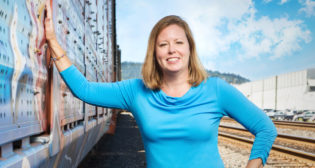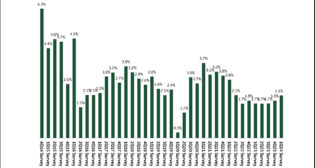
Making or Breaking Safe Train Operation
Written by Carolina Worrell, Senior Editor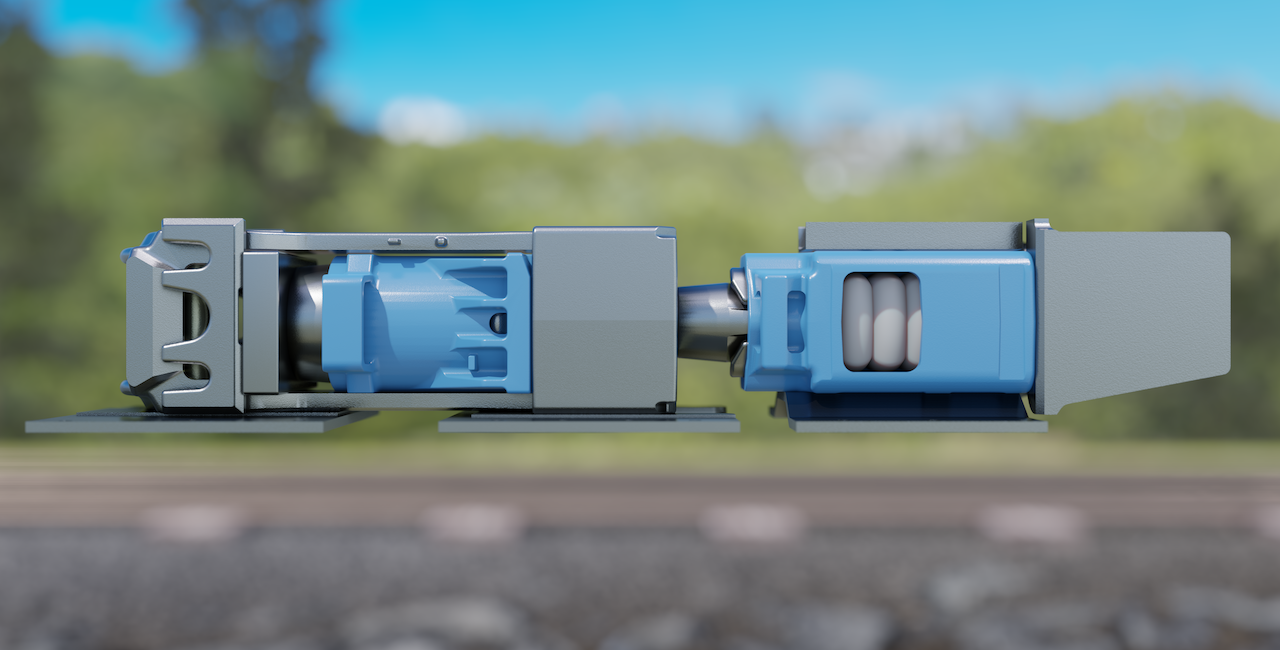
Installed in the railcar pocket, the Miner FCS® uses two draft gears in a specialized tandem arrangement. (Miner Enterprises)
RAILWAY AGE, MARCH 2023 ISSUE: Critical components like couplers, draft gears and end-of-car cushioning units must be capable of managing thousands of tons of force.
In-train forces—buff and draft—can literally make or break safe train operation if not properly controlled. Critical components—couplers, draft gears and end-of-car cushioning units—from such suppliers as Strato, Miner Enterprises, Amsted Rail and McConway & Torley must be capable of managing thousands of tons of force. Following is a roundup of offerings from these suppliers, as well as Railinc, which provides component tracking technology that enhances safe train operation.
Strato
“A lot of our larger development efforts right now are in end-of-car cushioning,” says Strato Chief Engineer and Manager Jonathan Sunde, who adds that the company’s Selective Cushioning Unit (SCU) has been in service for about five years in various degrees.
But new for Strato this year, Sunde says, is that the company has added its own in-house impact test capabilities whose primary initial purpose includes “continuous development and characterization testing on the company’s cushion unit line.”
“Moving all our efforts with individual unit testing, cycle testing, and proof loading and everything else we do in-house to perform full-scale impact tests—which we did previously with third-party facilities like MxV Rail—re-ups our commitment to the product line and its continuous development, as well as to some new iterations we’re working on to improve retrofitting costs on different car types,” Sunde says. “In continuing these efforts, we’ve been chasing after the retrofit cost to make it a direct swap for existing units to really help what our customers are searching for. On the draft side, we have an established and mature product line, from yokes to coupler bodies and knuckles and all the jewelry that goes along with it.”
In addition to alternative draft systems, Strato also offers a full portfolio of coupler and truck products. The coupler components have been at the forefront of the news recently, as they are subject to an ongoing International Trade Case (ITC).
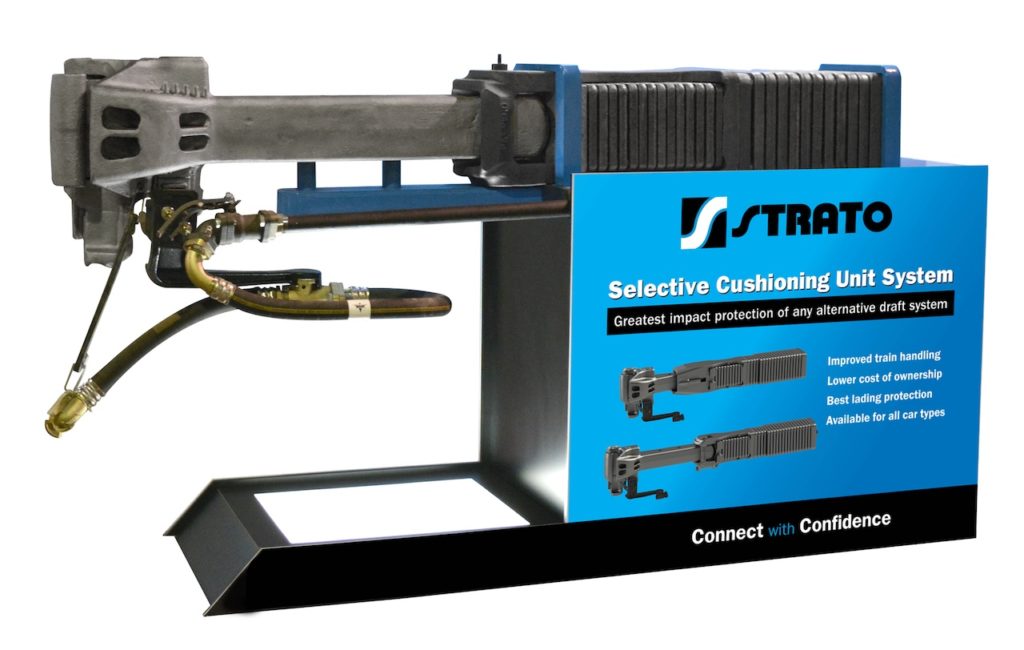
In addition to alternative draft systems, Strato also offers a full portfolio of coupler and truck products. (Strato, Inc.)
“That case went through the ITC process, and in June of last year, it was ruled in a unanimous 5-0 vote in Strato’s (and anyone else operating in China) favor, saying there had been no dumping,” says Strato Vice President of Sales and Marketing Rocky Loessin. “What was interesting about that case is that there was a lot of very good data presented about our products and what we use, which is called Bedloe technology, for our couplers and knuckles that help them last longer in the field.”
According to Strato, non-Bedloe coupler bodies, when compared to Bedloe coupler bodies, “failed approximately four times more often,” adding that “thanks to their superior durability, Bedloe Freight Rail Components (FRC) need to be replaced less often, leading to lower long-term operating costs.”
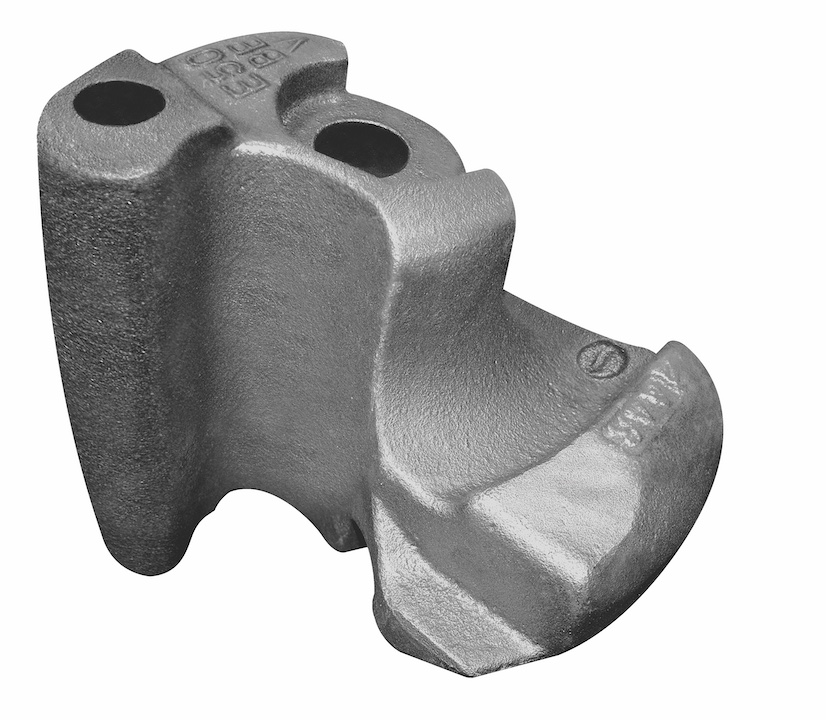
In addition to alternative draft systems, Strato also offers a full portfolio of coupler and truck products. (Strato, Inc.)
According to Loessin, another ITC case was recently filed by McConway & Torley and Amsted Rail’s United Steelworkers Local 1063 against all coupler imports from China and Mexico. This case is ongoing.
“We’ve stopped importing until the case is resolved,” says Loessin. “There are still a lot of questions about what the scope looks like and whether new car builds will be affected. But the real science, the real effort that goes into it is on the foundry and production sides, where our strengths lie. You can’t really do a whole lot for new divergent products because they must fit into the same stuff. So, our manufacturing method and longevity is where we feel we shine on those product lines.”
When asked if there is any other type of research and development the company is doing, Sunde says that Strato, which currently employs a team of 14 engineers, “maintains a basis to grow through development, and is constantly reinvesting a portion of its sales back into development efforts to continue solving existing problems covered by existing product lines, and finding ways to expand upon its portfolio that centers around solving problems, not just making ‘me-too’ products.”
From a general market perspective, Strato says it looks like it’s going to be a good year for new car builds—somewhere between 40,000 and 50,000 new cars are going to be built in 2023. “That market continues to thrive on the new builds,” says Loessin, who adds that “there’s a lot of interest in getting out of the standard hydraulic cushioning units.”
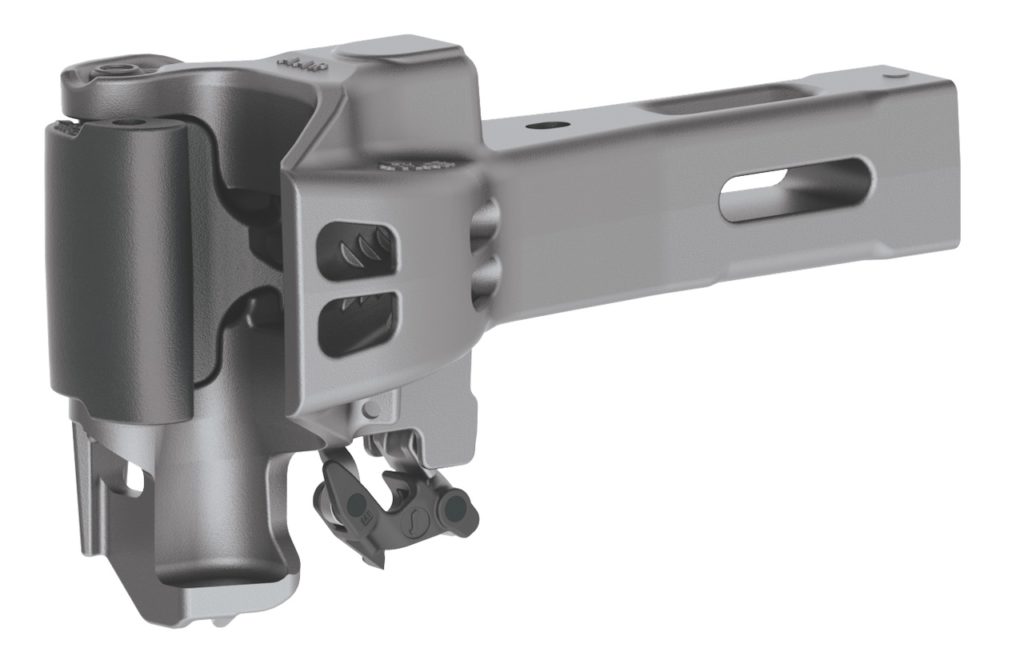
“A lot of those builds are flipping over to alternative draft systems, including ours,” says Loessin. “There are still some hydraulic units that are getting placed mostly on boxcars at this point as we work through what pool requirements look like. But that’s a good market. We have a strong aftermarket drive on our SCU in the sense that our retrofit program is second to none in being able to keep a safety stock of inventory and ship within a day or two of getting an order. That’s important for shops. We’re seeing retrofits on center beams, coil cars, etc. And we see a pretty good market continuing for the next several years. Most of the railroads do not want hydraulic units on cars. They are bad for train handling. A lot of customers understand that hydraulic units are notoriously bad for maintenance costs. They fail often, so they don’t necessarily provide the impact protection they should. So, we continue to see market penetration for alternative draft systems in general and specifically what we can speak to is the Strato system.”
Regarding Strato’s Bedloe technology for couplers, the company says it’s going to be somewhat limited this year because of the ITC case, but adds that one way or the other, it will be back in the U.S. market.
“The data that came out in the first ITC case speaks for itself,” says Loessin. “Our superior technology has already proven itself and continues to benefit both the Class I railroads and private shippers. And, regardless of the ITC, we will continue to support our Canadian and Mexican partners.”
Miner Enterprises
Often with hydraulic-based systems, energy is not efficiently managed. Short life cycles lead to costly maintenance; and assets are not sufficiently protected when broken knuckles, hose separations and lading shifts interrupt operations, says Miner Enterprises, which, with 127 years of experience in railcar equipment design, is “one of the industry’s top suppliers of draft gears, brake beams, gates, constant-contact side bearings and other high-performance components.”
The Miner FCS®, the company says, is designed to “raise the standard of protection currently being provided by traditional hydraulic cushioning devices.” Installed in the railcar pocket, each Miner FCS® uses two draft gears in a specialized tandem arrangement. “Utilizing Miner’s proven draft gear technology, Miner FCS® minimizes free movement caused by slack, which prevents premature wear, lowers maintenance costs and better-protects assets,” the company notes. “It also improves operations by reducing service interruptions and providing the flexibility to safely operate longer trains.”
The Miner FCS® also mitigates run-in and run-out events by combining draft gear friction with Miner’s patented TecsPak spring material. This, Miner says, “leads to fewer lading shifts, broken knuckles and hose separations—root causes for undesired stoppages and costly delays often associated with hydraulic units.”
Miner notes that the FCS® “installs easily on refrigerated and standard boxcars, steel coil cars and flat cars, including center beam and general service flats.” The company has been collaborating with Class I railroads for several years in developing the Miner friction cushioning system. More than 4,000 Miner FCS®-equipped cars are in service, with a combined 100-plus million service miles.
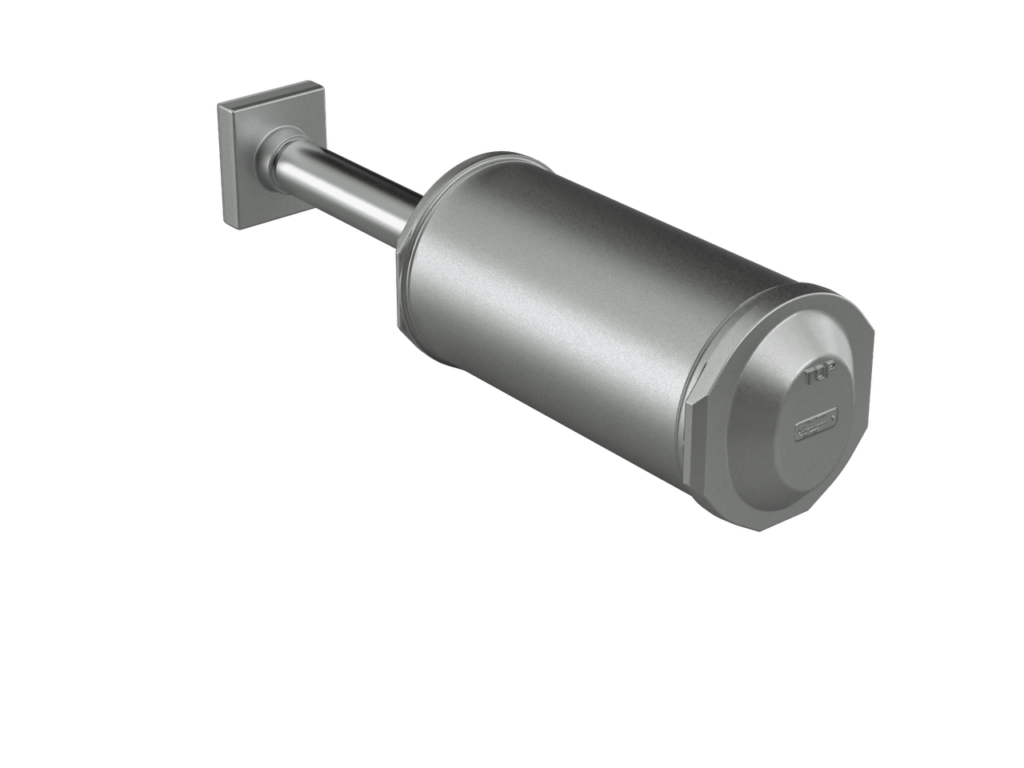
Amsted Rail’s Active Draft Cushioning Units are designed “to maintain compression, providing optimal protection against both the draft and buff stresses railcars experience whenever the train stops or moves.” (Amsted Rail)
Amsted Rail
Amsted Rail’s Active Draft Cushioning Units are designed “to maintain compression, providing optimal protection against both the draft and buff stresses railcars experience whenever the train stops or moves.”
Unlike a standard cushioning unit, which is metal-on-metal with a fully extended neutral position, the Active Draft Cushioning Unit has polymer pads that stop the unit short, allowing for travel available in both the buff and draft directions, protecting the railcar and lading from both in-train shocks and yard impacts. This design, Amsted Rail says, “provides many benefits over other end-of-car cushioning options, including less stress on knuckles and less opportunity for undesired events, delivering the protection to ensure sensitive lading gets to its destination without incident.”
McConway & Torley
McConway & Torley, founded in 1869, describes itself as “the original designer of the first standard automatic coupler.” With locations in Pittsburgh and Kutztown, Pa., the company’s “continued craftsmanship has led to a product line that includes every Association of American Railroads (AAR) approved coupler, as well as custom coupler solutions, which are all proudly cast in the U.S.”
The company offers both freight and transit couplers. Freight transit couplers consist of the AAR standard E, E/F and F couplers, which are available with top and bottom shelves, as well as the bottom shelf E coupler.
All hazardous material tank car couplers require top and bottom shelves. Their purpose, the company says, is to “prevent vertical coupler disengagement during train derailment, and thereby minimizing the potential for tank car shell puncture.”
All new and rebuilt freight cars must be equipped with couplers with a bottom shelf as a minimum requirement, according to McConway & Torley. The bottom shelf serves to “support a mating coupler suffering a pull-out from the car sill. This keeps it from falling to the roadbed and presenting a derailment hazard.” The shelf, the company says, also serves to “prevent vertical coupler disengagement during derailment, as related to the mating coupler.” The bottom shelf is effective when the 10-A contours of the mating couplers are within AAR-specified condemning limits.
McConway & Torley notes its H-Type “Tight-Lock” coupler constitutes the “standard coupler for North American passenger equipment. All-important engaging surfaces are machine finished to closely control dimensional tolerances, resulting in secure positive locking, which eliminates any play, or slack, between mating surfaces.” The H-Type coupler body and components are supplied in either AAR M201 Grade E, or Grade C steel. The coupler lock is only supplied in Grade E.
Casting, machining and assembly of the H-Type are done in McConway & Torley’s AAR-approved Pittsburgh foundry. The in-house capabilities and expertise allow the company to have “the largest buy-America compliant coupler capacity in the world.” Purchase and acceptance of H Couplers is governed by the APTA-RP-M-003-98 Specification, which references the following AAR and FRA requirements:
- AAR M201 General for Steel Castings.
- AAR M211 Purchase and Acceptance of AAR Approved Couplers and Coupler Yokes for Freight Service.
- AAR M-1003 Specification for Quality Assurance.
- AAR M205 Yoke, Coupler–Test Requirements.
- FRA CFR Title 49 Part 238 Passenger Equipment Safety Standards.
Railinc
Improved visibility for the location and condition of key railcar components has resulted from the Component Tracking program, administered by Railinc for all North American freight rail equipment, Railinc Product Manager Clayton Miller tells Railway Age.

“Couplers have been included in Component Tracking for some time, and the program was opened to cushioning devices in 2021,” Miller says. “Cushioning devices help prevent hard coupling during switching for cars that carry particularly heavy or sensitive loads. To date, some two million couplers and 100,000 cushioning devices have been associated and registered in the Component Tracking program. Other components in the program include slack adjusters, brake valve control systems, side frames, bolsters, wheelsets, side frames and pressure relief valves.
“In addition to improving the management and maintenance planning for railcar components, a significant benefit is that component recalls can be accomplished much more efficiently and quickly than was previously the case. Rather than having to pull many cars from service to find specific component types for a recall, only the cars that have the specific targeted components need be included in a recall.”
Including cushioning devices in the tracking program “will also help prevent damage to equipment and shipments by enabling car owners to schedule maintenance and repairs before equipment failures occur in the field,” Miller notes.


